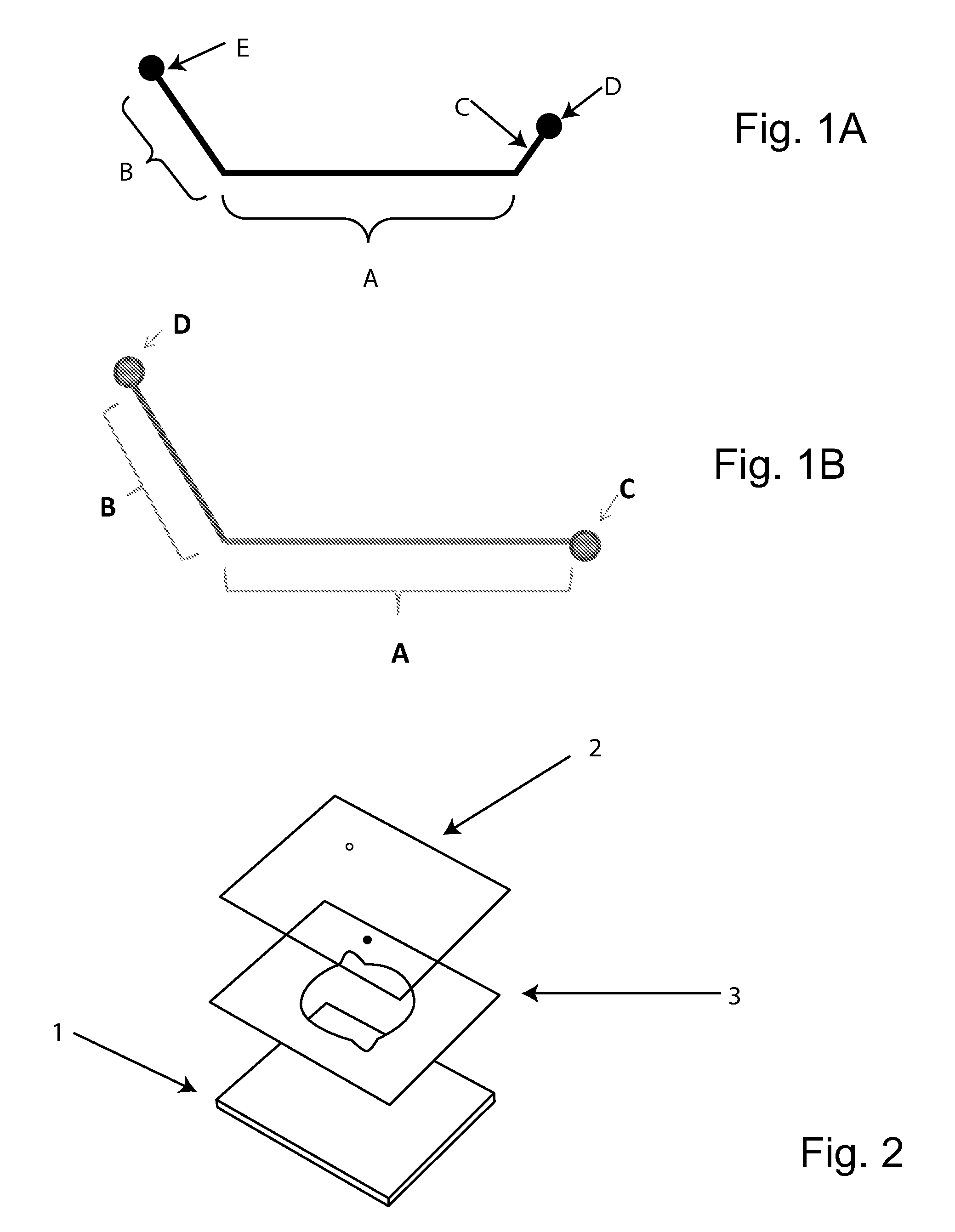Quantitative, Highly Multiplexed Detection of Nucleic Acids
a nucleic acid and multiplexing technology, applied in the field of real-time dna amplification, detection and quantification, can solve the problems of increasing the thickness affecting the efficiency of the reaction chamber, and the noise of the detector used, so as to achieve the effect of reducing manufacturing costs and improving efficiency
- Summary
- Abstract
- Description
- Claims
- Application Information
AI Technical Summary
Benefits of technology
Problems solved by technology
Method used
Image
Examples
examples
[0109]The following examples are offered to illustrate, but not to limit the claimed invention. It is understood that the examples and embodiments described herein are for illustrative purposes only and that various modifications or changes in light thereof will be suggested to persons skilled in the art and are to be included within the spirit and purview of this application and scope of the appended claims.
example detection
[0110]The detection system of this example allows for single chamber, multiplexed, real time PCR detection of a target nucleic acid. The system extends the multiplexing capability of real time PCR by moving from traditional spectral discrimination to array-based spatial discrimination to generate real time information specific to each target being amplified.
[0111]Traditionally, single well multiplexing is achieved by using PCR probes such as TAQMAN™ probes that are specific to each amplicon and that are labeled with fluorophores of different wavelengths. This approach limits single-reaction multiplexing capability to a maximum of about 5 targets, due to limits on dye emission spectra and the spectral window.
[0112]The approach described in this example uses a labeled PCR probe that acts as a surrogate for the amplicon to transfer information about the progression of amplification to a surface bound array during the process. Information about the kinetics of amplification is pre...
example 1
Three Step Amplification Reaction
[0124]The amplification reagent mix contained standard PCR reagents including two PCR amplification primers specific to each target being amplified, as well as a PCR probe specific to each target being amplified. The structure of typical probe is schematically shown in FIG. 1A. As shown, FIG. 1A probe region (A) represents a nucleic acid region of the probe that is complimentary to a target amplicon, designed using the same rules as is typical for a traditional real time PCR probe (e.g., as in a TAQMAN™ probe). Probe region (B) represents an orthogonal nucleic acid “flap” sequence that is complimentary to a corresponding capture probe (discussed below), but not the target nucleic acid. For purposes of illustration, this sequence is designed in one example to have a Tm of between 40° and 46° C., although other probe designs can be substituted. In one example, the sequence length is about 13 or 14 bases. Probe region (C) represents a nucleic acid with ...
PUM
| Property | Measurement | Unit |
|---|---|---|
| depth | aaaaa | aaaaa |
| depth | aaaaa | aaaaa |
| depth | aaaaa | aaaaa |
Abstract
Description
Claims
Application Information
 Login to View More
Login to View More - R&D
- Intellectual Property
- Life Sciences
- Materials
- Tech Scout
- Unparalleled Data Quality
- Higher Quality Content
- 60% Fewer Hallucinations
Browse by: Latest US Patents, China's latest patents, Technical Efficacy Thesaurus, Application Domain, Technology Topic, Popular Technical Reports.
© 2025 PatSnap. All rights reserved.Legal|Privacy policy|Modern Slavery Act Transparency Statement|Sitemap|About US| Contact US: help@patsnap.com



